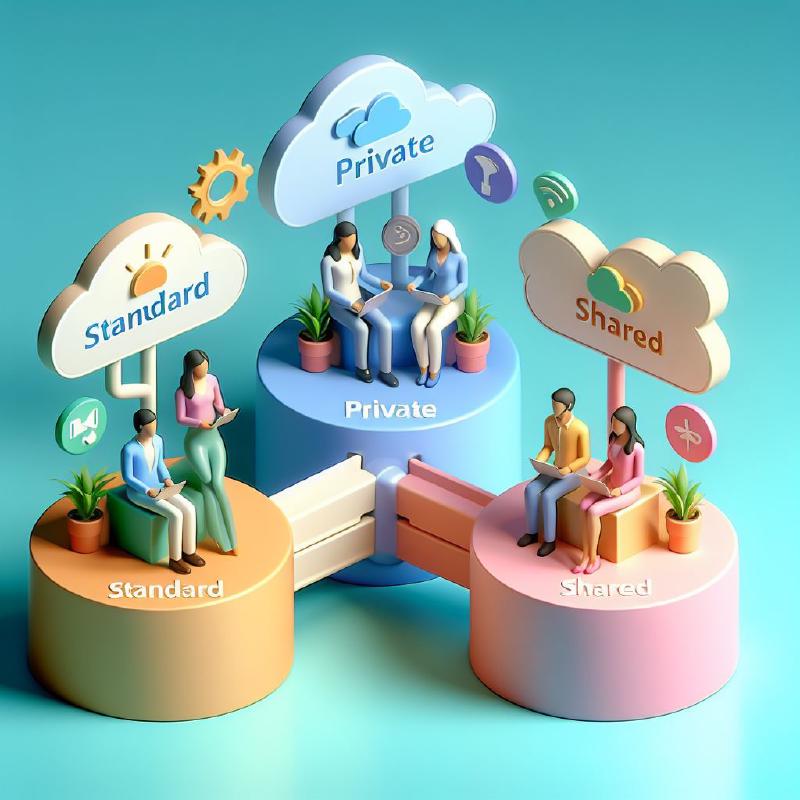Introduction
Microsoft Teams is a powerful collaboration tool that allows you to communicate, share, and work with your team members in a secure and efficient way. One of the key features of Teams is the ability to create and join different types of channels, which are subgroups within a team that focus on specific topics, projects, or tasks.
But choosing the right channel type can be hard! In this blog post, I will explain the differences and benefits of the three channel types in Teams: Standard, Private and Shared. I will also give you some tips on when to use each one, and how they affect the sharing, apps, and features available in Teams.
Standard Channels
Standard channels are the default and most common type of channels in Teams. They are open and visible to all members of the team, and anyone can join and participate in them. Standard channels are ideal for general discussions, announcements, and information sharing that are relevant to the whole team.
Some of the benefits of Standard channels are:
- They foster transparency and collaboration among team members.
- They allow you to use all the apps and features that Teams offers, such as chat, meetings, file sharing, tabs, Planner, Forms, and more.
- They can be moderated by team owners, who can set permissions and policies for posting and replying in the channel.
Some of the limitations of Standard channels are:
- Can become cluttered and overwhelming if too many people are posting and not staying on topic.
- May not be suitable for sensitive or confidential discussions.
Some of the scenarios where you might want to use a Standard channel are:
- You want to share news, updates, or feedback with the whole team.
- You want to create a space for brainstorming, ideation, or problem-solving with your team.
- You want to organize a team event, meeting, or training session.
Private Channels
Private channels are a special type of channels that are only visible and accessible to a subset of members within a team. They are useful for sensitive or confidential topics, or for working with a smaller group of people on a specific project or task. Private channels have a padlock icon next to their name, and only the channel owner can add or remove members.
Some of the benefits of Private channels are:
- They provide privacy and security for your conversations and files.
- They allow you to create a focused and dedicated space for your work.
- You can customize the settings and permissions them for your needs.
Some of the limitations of Private channels are:
- They do not support all the apps and features that Teams offers, such as Planner, Forms (based on EntraID Office Group), and some third-party apps.
- They can be confusing or fragmented if you have too many private channels in your team.
- They can create silos and hinder transparency within a team.
- Members of a private channel must be members of the team that the channel belongs to.
Some of the scenarios where you might want to use a Private channel are:
- You want to discuss sensitive or confidential information, such as financial data, legal matters, or personal issues.
- You want to work on a project or task with a specific group of people, without distracting or involving the rest of the team.
- You want to create a sub-team within a larger team, with its own identity and goals.
Shared Channels
Shared channels are a new type of channels that are available in Microsoft Teams. They allow you to create and join channels that are shared across multiple departments, either within your organization or with external partners. Shared channels in Microsoft Teams are allowing access without the need to switch tenants. Users can collaborate effectively while remaining on their home tenant, streamlining communication and workflow.
Some of the benefits of Shared channels are:
- They enable cross-team and cross-organization collaboration, without the need to switch between different teams or accounts.
- They allow you to share files, chat, and co-edit documents with people outside your department or organization, while maintaining control and governance.
- They support most of the apps and features that Teams offers, such as meetings, tabs, polls, and more.
Some of the limitations of Shared channels are:
- To collaborate via shared channels, both the inviting and invited organizations must have B2B direct connect set up by an admin.
- They don’t support all the apps and features that Teams offers, such as Planner, Forms (based on EntraID Office Group), and some third-party apps.
- They can’t be shared with guest users.
Some of the scenarios where you might want to use a Shared channel are:
- You want to collaborate with another team or department on a common project or initiative.
- You want to communicate and coordinate with an external partner, such as a vendor, customer, or consultant.
- You want to create a community of interest or practice with people from different teams or organizations.
Conclusion
Microsoft Teams offers different channel types to suit your collaboration needs and preferences. Whether you want to have an open and inclusive conversation with your whole team, a private and secure space for a specific group of people, or a shared and seamless experience with external partners, you can find the right channel type for you in Teams.
I hope this blog post has helped you understand the differences and benefits of Standard, Private and Shared channels in Teams, and how to use them effectively. If you have any questions or feedback, please leave a comment below or contact me through any of my social media accounts.
